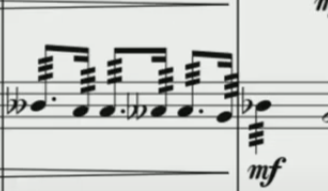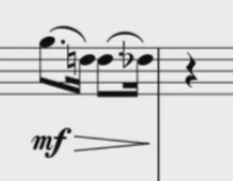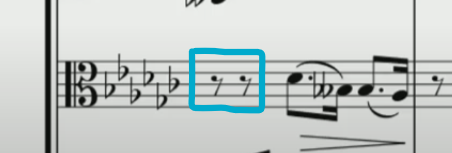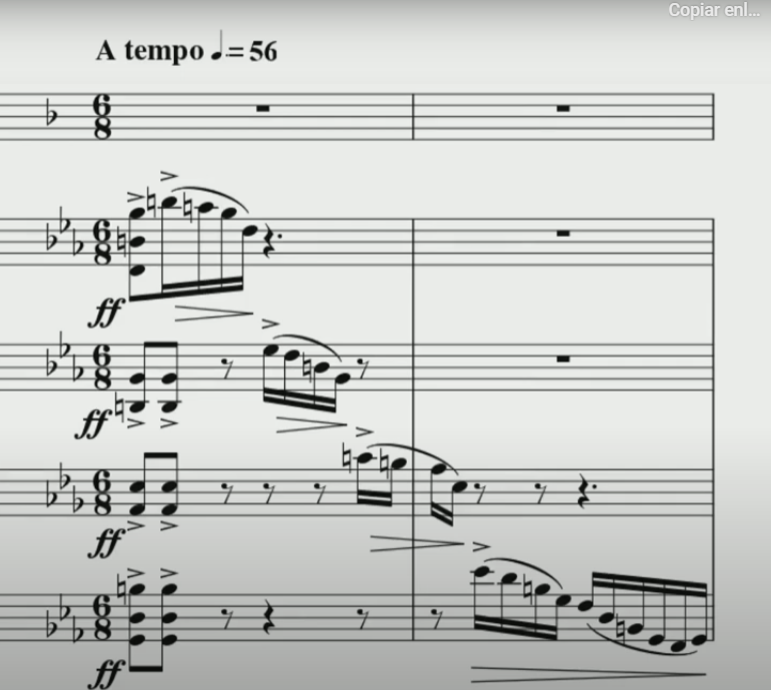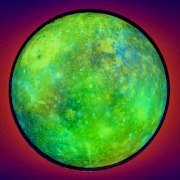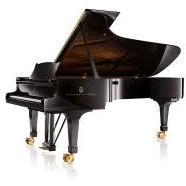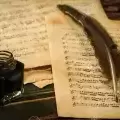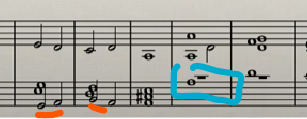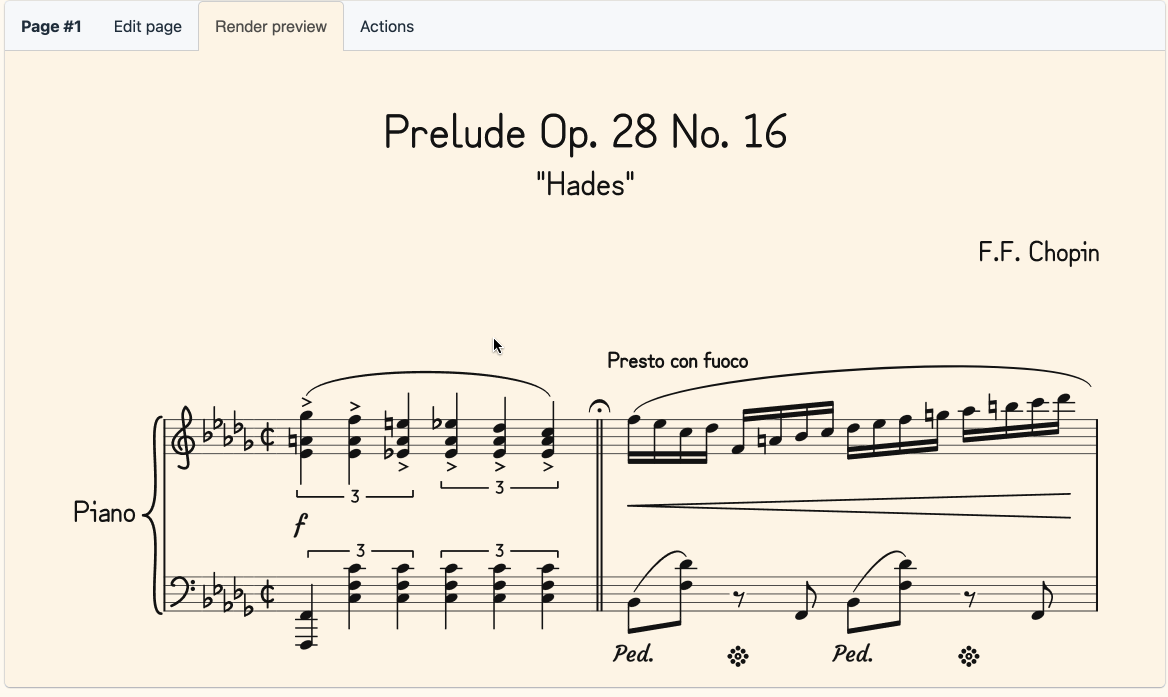Leaderboard
Popular Content
Showing content with the highest reputation on 11/28/2022 in all areas
-
I went at the hares pace writing but the tortoises in posting it. oboe is the hare and cello is the tortoise4 points
-
So I took the time to listen to your piece as a whole, and I will rate my favorite movements from greatest to least as a start: Movement 3 Movement 1 Movement 2 Movement 4 Movement 1 is very strong Movement 1 actually is quite strong, since you had a clear theme / motif, and you captured my interest for the full 20 minutes. A tremendous feat to have someone intently listen for that long. Your key changing is phenomenal, and loved your usage of the tremolo. Chords though? Be careful because it is impossible for string instruments to play 3 notes a time. Always write your music with playability in mind. Even if you don't expect to ever get performed. Be careful of tiring the ear Let me just get this part out of the way. In terms of length of your piece, given the style (baroque), an hour long seems like a lot. When music doesn't have too many breaks and goes on for such a long time, it tends to tire the ear. You want to be mindful of that. I also think that your movements aren't differentiated enough to provide that sort of relief. For example, I've lately been listening to Tchaikovsky's symphonies, and they are super long. However, his movements are quite different from one another, and although they tie into his themes, they are still different enough as to keep the listener engaged. I also feel like baroque style music is tough to listen to for such long lengths just due to the nature of the style (lack of pauses, breaks, lines of notes, etc). But let me stress, your first movement kept me engaged for the full 20 minutes....so you clearly have skill. What if... As I was listening to your work, I was thinking that you have the skill to write a full symphony. This piece is skillfully done, and your attention to detail is quite amazing. Your usage of crescendos and decrescendos, tremolos, pizzicato strings, legato and other articulations shows me that you have a lot of practice. I really would love to hear you write something with...more breaks. It would really bring out your music. Speaking of bringing out your music... Please invest in some better sounds! You are a fantastic composer with so much attention to detail, I want you to, no I order you to invest in instruments! And reverb! You need good reverb! If I am going to listen to an hour of your music, my ears require something that sounds much better than the sounds you are currently using. Even crappy soundfonts would sound better than what you have. Isn't there a Yamaha GM soundfont that's floating somewhere on the internet? Invest in better sounds, this is something I have to nix you on 🙃 Movement 3 is absolutely amazing, and I mean it This movement was my favorite, and I will tell you the reason why. You changed it up big time in the beginning of the movement with those slow chords. Then you get into a fantastic fugue! I LOVE fugues and counterpoint. Your counterpoint here is skillfully done and you make use of all of the instruments, where they all have their different parts. No doubling up from what I could hear, and I could just imagine how much more amazing this section would sound with proper instruments. But here's another reason why you want better sounds. The viola is a beautiful instrument, and I want to hear the beauty of that viola play in your counterpoint. The cello is such a mellow sounding instrument, but sounds like it is droning on, and the violin sounds like it is whining. You get the point, right? It is a turn off to people who may be inexperienced at critical listening. But it is such a great movement, and your strongest. You captured my attention for the entire duration of this movement as well, and that is a tough feat because I am quite picky with music. Really good job here. Overall this is a great piece and I would be curious to see how you do with larger orchestral writing in the future.2 points
-
So let's begin. I don't know how many hours this will take but I definitely felt the need to do this. First of all, I do think you should really consider uploading more of your works here. They are already in YouTube, so they're already public, and I believe some people will definitely like those. I have listened to a few before fully listening this quintet and I can say that despite your totally understandable opinion I must insist, they are worth of being uploaded here! • First movement: God, 6 years of work?! It's a pity we cannot listen to this with real instruments. I imagine it would cost a decent amount of money to hire professionals and a lot of effort to make it in a DAW, but perhaps better soundfonts would have helped. Anyway, after a short "presentation" things start to move. Double-bass: It has a lot of work between M[60-70] and its solo at M100 would surely sound more convincing (as everything, but this in particular) with more real sounds. Nice, the whole section around min 4-5 is very enjoyable for me. It gives a brief mood change. God damn those tremolos would sound 10000 times better with the deserved sound! Why? (why not compressing the silences? Just curious, I would do it so I ask) The passage starting at 172 and the likes are so nonchalant, they really give a clever contrast for those sections with string tremolos and scales and give the fair amount of importance clarinet deserves in my opinion. The climax you reach at M213 really gives me the feeling of despair. Probably everything you've built from around min 4 to this point is my favourite part in this movement.These figures would be a nightmare to play on the piano (most likely) but strings have it easier (...right???). I know this is being too specific but since it's obvious how much you value (righteously) your work I'll be specific and tell you, beware with music notation software alignment, they do things like these: which hinder readability a bit (see how the flat collides with the dot) and needs manual adjustment. This is an issue that Music Jotter won't have isn't that right @chopin? 😜 Well now that I'm done with this totally planned spam let's continue. Again I would have compressed these silences: (M220). Noticed a bunch more of these before 220 on a second listen. That tremolo cresc. just after those M22X is really fitting despite the sound isn't the desired one. Here I get what you are trying to do but I am not totally sure whether you may get what you wanted. Instruments may sound connected in the digital interpretation but this may not happen in real life. I would have extended the last note a bit... But anyway, you clearly indicate legato. I notice many modulations and ideas coming in and out. Though some are based on the main motive, one could get lost on a first listening. Not that this is necessarily bad, but I feel that the section that begins with the above measures could work alone as a movement itself. However, since this is a quite long first movement I guess this works as the "B" or "development" and additionally it sounds beautiful, comes back to the main motive or variations of it, I really like the pizz. passages and some beautiful melodies that make me getting more immersed in this first movement. The phrase starting at M400 is EPIC. And from near 400 on I suppose we come back and go to the recapitulation of this movement. It's really grandiose up to M500 where I feel a bit lost in the 20 next measures. From ~M530 and so on there's a series of "false finals" that exhaust the motive. In my opinion, from all those "finals" you could have chosen, the one you decided didn't convince me too much but I think this is influenced by the overall sound of the piece. Probably it would be far more convincing, again, with better soundfonts and surely if played by real interpreters. In summary, a quite long but well developed first movement driven mainly with a single motive and variations of it and containing really epic sections, contrasts, lots of modulations and key changes and last but not the least important recognizable enough structure. • Second movement: Making use of the chapter function in YouTube will be really useful in this case. The beginning is structurally a repetition of the 1st movement. A clear and solid presentation of the motive for the listener, will this one drive the entire movement like it happened with the first? I shall see in 9 mins (well actually more, it's 19:22 and I started writing this at around 18:30 lol, time passes quickly). Finally the clarinet comes to the party and strikes with a difficult variation with the motive, very nice development, I'd say that there's some pro... Oh god the pizz. section sounds incredible! There's a learning curve here I believe. I still see these silence sets that don't make sense to me. Despite being also in a ternary time signature, the change of tempo speed & form makes this still fresh and enjoyable. I am not even halfway through the piece so perhaps I'm speaking too soon. But I'm not getting bored at all for now. What you did at M284 was unexpected. I'm not sure of it but my ears aren't really displeased. The second voice that arises from the strings complement the clarinet neatly (starting near M425). This, along the pizz. parts are my favourite parts of this movement. The slow build-up that reaches the beginning of the movement would enter in that list too. Between ~M[650-700] I feel a weaker melodic line on the clarinet which makes me wonder where this is going. The changes in dynamics still serve as a guide, but the strings are "advancing and going back", it's like they cannot really go anywhere without the clarinet and the clarinet is not present enough because it's also doing the same "advance and go back" over and over. This leads to a kind of chaos that isn't solved and after that we get that final pizz. part which doesn't conclude anything to me, thematically speaking. Still I don't find this misleading, we are about to enter in the second part of this great quintet. In summary a powerful scherzo, perhaps a little repetitive in some parts and with a confusing final, but with a really great beginning, a solid motive and a very successful feeling of anxiety in some sections like min 27-28. • Third movement: Well, after a pause to have dinner I have re-listened to the first two movements and added comments and criticism here and there, let's continue: From M1 to M12 you completely got me, but that abrupt pause took me out a little. Nice counterpoint that keeps incorporating the voices up to they all reunite in a well notated and good-sounding web of voices where the sustained prominence of one is rather uncommon. Well constructed fugues always make me lose my chronoception. Whoa, now that I reached the adagio mesto it gets even better, everything from (and specially) the dynamics to the disposition of voices and the beautiful mixing of them reaches new heights compared with everything else in the composition. I am not going to stop the track this time to analyse anything first and just re-listen, I cannot, these kind of pieces always are satisfying to listen to the point I cannot see where is the right spot to pause them and comment, so I won't do it. I read some legatos and in the clarinet (M161) and I wonder why you want them to stop every 3-4 notes instead of lasting up to the end of the phrase. The clarinet solo convinces me when imagined in real life, but the transition to the next section not so much. I'd say this movement ending is the best one up to now (to my ears). Alone, a great work. Along with the other two movements, an inspiring third movement that acts as the great contrast (in tempo form and speed) with the other two and precedes the final movement of this surprising work. Surprising not because it's particularly revolutionary, but because this is supposed to be one of your first works, (isn't it?) and yet it's incredibly solid and it gets better with every movement. Even if it took that much to you, I am sure you'll make many more, but this isn't the proper time τ to digress. It is time to enter into the grand finale of this quintet and see if it's up for the high standards left by the prior movement. • Fourth movement: OK. I'd not exaggerate if I say that the first few seconds did tell me more than a lot of sections of this piece. It's definitely keeping up to the previously established standards and honestly it surpasses my own expectations. All the tricks you've been using on the 3 prior movements that didn't convince me too much here work perfectly up to now. The abrupt pauses no longer sound neither a little bit unfitting, voices are much more recognizable and the clarinet and the strings mix as good as in the 3rd movement but with a more varied thematic. This movement is something else, it is completely a "level up" compared with the first. The use of dynamics is refined, the question-answer structure of many sections here demonstrates in my opinion the peak of the learning curve that can be seen in this composition which would just deserve my 5 stars only by this work alone. Really everything feels much more "clever" here. That can be perfectly seen around M389 of this movement. You could have ended there, but why? Nah, you kept on and produced epic sections like the one with sfs near M432. I would really pay to see this movement in a concert and I'm sure I would not be able to look away. I wonder if what this movement tells and the fresh and powerful strength with which it speaks is also due to the preceding movements. In any case, God, I am already past min 58 and I don't see a clear trace of a final. I don't know Beethoven's string quartets enough to give an opinion about your statements. Wherever Beethoven is, I'm sure it's alright, but I have even heard a past motive from another movement just before reaching the first hour. Lol there's even a cadenza at ~min 61 that sounds kinda jazzy in the end (perhaps you're interested @Tom Dahlenburg lol). I am not really sure of the effectiveness of pp vs. ppp but the ending is perfect and unexpected (in Eb). I promised myself that I had to check this piece fully before the end of this weekend, but lol, it's 23:59 so I'm afraid this reply will be published on Monday. No worries though, the whole piece was enjoyable both by parts and as a whole. My favourite movement was, by far, the fourth, which I listened to again before continuing with what I'm writing now. It's long, yeah, but I have listened to 10-15 min pieces (not necessarily here) that didn't say me anything and felt like much more time. Hats off, and my sincere congratulations for achieving this and persevering for years till this final draft. Again, it has been a pleasure to listen to this commendable, exciting, unsettling, peaceful, full of despair and hope work, the C minor clarinet quintet, movement by movement and as a whole, as well as reviewing it here. I know I've been pedantic specially with these last words, but really I'm still under the magic of the last movement and I just want to add: excellent, keep composing, keep uploading your works both on here and on YouTube! Kind regards and thank you for sharing. Daniel–Ømicrón.2 points
-
It took me a few months, but I finally completed my most recent work for orchestra. This piece is nominally in scherzo-trio form, with some slight modifications. Each scherzo is itself also binary in the manner of a sonata form exposition and recapitulation. The trio is actually a waltz, slowly built up from nothing via the gradual introduction of cliches. Though it seems to be unrelated to the scherzo at first, I bridge the gap with the transition back into the scherzo. The strict metric modulation to precisely half-tempo for the trio is critical. In the concluding fugato, both themes from the scherzo are combined simultaneously. Score video:1 point
-
Hi again! It's a bit too late here to continue reviewing so I thought it was the perfect time to make a post and go to sleep once and for all :]. I gladly present you my fifth nocturne —finished during the night of March 1st, 2022—, dedicated to a person which I value very highly (and whom indeed got another dedicated nocturne later on). I tend to think my "nocturnes" (I have explained in a prior post why I called them like that I believe) either go in pairs or alone in terms of style, approach or... I don't really know how to describe it. In any case, this one would be paired with the sixth one which I may publish here soon. Without further ado, here's the video: Of course here you are the score in PDF: 52 - Nocturno Nº5.pdf It is not particularly difficult (or is it?), but as always I'll prefer not to mention anything and let you judge. As always, any feedback, criticism, big or small commentary, interpretation, whatever you think as long as no cats or dogs are damaged in the process is very welcome here. If you somehow are interested in other nocturnes and pieces I've uploaded here, I have edited my "About me" page for you to easily navigate through them. Check it out HERE. You can also check the prior nocturne uploaded here clicking on here. As always, thank you in advance guys. I hope you find this one decent enough. Kind regards, Daniel–Ømicrón.1 point
-
Here is my entry for the Christmas Music Event! It isn't necessarily a Christmas piece, but it's about snow and winter, so I figured it was close enough. Since I know someone will probably mention it, I am well aware of the very close voicings of chords low in the range of the ensemble, but a recent singing experience showed me definitively that if those kinds of voicings are well-tuned, they can work wonderfully! So I put them there intentionally. The text is by Robert Frost: The way a crow Shook down on me The dust of snow From a hemlock tree Has given my heart A change of mood And saved some part Of a day I had rued And here's the piece: Please give me feedback, as it helps me improve my writing!1 point
-
Nicely done. Agree with everything @Omicronrg9 said above. Great word setting and painting throughout. The first thing that strikes me is that and SATTBB texture is very thick and heavy. The poem itself is rather uplifting in its own way, I wonder if you could be lighten the texture at some points? Some things (personal preferences) that you might want to think about: 1 - it's a short poem, and as such it's a short piece. It starts pp and ends pp. Bearing this in mind, I wonder if the fortissimo in 23 is a bit too dramatic. To me, there isn't enough time to build up a proper climax, I would make that read just forte. 2 - I enjoyed the clashing extended chords such as the very last one. However, I would like to see more of them! When they only appear at certain points at the ends of phrases, they seem a bit cautious, even accidental. You really could make something of those and create a more mysterious harmonic world through some of the quieter passages - it wouldn't need much changed. Fantastic choral piece, thank you so much for taking part in the event!1 point
-
Dude... Even though you didn't enter the competition... What an amazing and powerful piece this was. I'm happy to know that...yeah you didn't enter because you thought the score would be a factor, or that you felt some other circumstance wouldn't make you competitive...it brought out something unique and quite possibly the best in you. Your musical voice is something I'll always consider very much your own, and an amalgamation of your inspirations along with your own personal experiences. It's something we all strive for in composition. Forget the money I shelled out, music like yours is the reason why I wanted to do the competition. Congrats on a piece you should be proud of.1 point
-
@Henry Ng Gave you a shoutout here, and clipped my favorite part here.1 point
-
1 point
-
Nokturn, played by another great pianist from Poland. What do you think? Recently I am losing the motivation to write music. Seems like like our running world has less and less space for classical music.1 point
-
I hope that won't last long😂, it will either be the first movement of my string sextet, the revised 1st and 2nd mov of my 2nd Clarinet Quintet, or the scored and recorded version played by myself of my piano sonatas. Thank you!1 point
-
1 point
-
Hi. In which software is this written? Just out of curiosity. Colors, and that font and... I think I've seen this somewhere. Ah, musescore. Musescore? I have no complains about those voicings, it's a pity the piece ends so soon, I did enjoy it a lot. Some details: Red: I would really change the direction of the stem, I believe this would help readability. Blue: in some contexts this is perfectly valid, overall it is redundant unless you want a certain singer to be quiet for that bar. In that case I'd put the silence further away from the note, but in any case this is just subjective and this particular screenshot is taken from the organ I believe (?). Musescore often tends to left redundant silences that often add nothing to the score or even hinder readability. Finally, including the role of each pentagram/system at the beginning of the score would really help any reader to understand if what he's reading is correct or not. I will assume this is a score with 6 singers and an organ for now :] Kind regards, Daniel–Ømicrón.1 point
-
It's nothing man, I really felt the need to review your piece and give it a deep listen. BTW, this probably won't help at all with diffusion but I have made a post in my YT channel featuring yours, perhaps some friend of mine takes the bait and listens 😎. (I also featured Tom's channel because he also uploads nice pieces to YT). This is the publication (made in Spanish and English): https://www.youtube.com/post/Ugkx40Cev1leqmesBn-845cUuwIiGLBYKwEK I will possibly also feature your piece in my newly (re)made twitter, lol. Looking forward to your next publications!!1 point
-
I am speechless skimming through your commentary. I will reply to yours later, after studying it. Thank you so much! I have nothing to say how thankful I am to your effort paid. Kind Regards!! Henry1 point
-
It's a pleasure for me to continue dialog with you, so let me clarify more things: 1. The language in Unison is very straightforward(intentionally), yes you need to remember certain rules in order to type your music really fast. But you are getting so much in return: you are learning about the structure of any music score: note/chord/unit->voice->stave->measure->page line. The flexibility is ridiculous, you want 10 voices - you can do it. You want crazy cross-measure tuplets, cross-measure beaming groups or cross-stave s-shaped slurs in any form - you get it. Imagine you have a pen and paper, you can draw anything you want, literally. This is what Unison offers. It's not like you need 10 voices, or any other crazy staff, but if you want to - you just can do it. Because who am I, as a creator of a tool to tell you what you as a musician can or cannot do. Music is art, and there are no restrictions of how you can express yourself. But it does not mean that Music don't obey certain rules, sure it does. But having such flexibility is a bless. Building such flexibility in W1 is a nightmare, but this is what probably holding back music development. If software restricts you in some way, then the whole progress of music slows down. You need to learn your software anyways, and sometimes those W1 apps have really big difference in how you approach certain tasks. Because UX are completely different in any given W1 app. But people learn new things if they want a change. Language that I developed for Unison is extremely plain. You said that you don't mind brackets. And that's the problem, because I can use brackets for let say tuplets, other language creators can use them for beaming groups and etc. In that little moments you need to learn again and again for new languages, which I try to avoid at all costs. And if you see words like "measure, staff, voice" - there is no way that you would not understand that. Or commands like: "slur on first stave from first unit to third unit". It's just super straight forward. You can read such text and can replicate music score on a paper if you want to. Is it verbose - sure, but there is no way that you as a musician cannot understand it. For me this is the most important factor. 2. About the first example: I tested in many cases this solution, and I would say that in 100% (or close to it) it's a perfect solution. 3. I would also mention why Unison is cooler than LilyPond - navigation system between text and image. I remember back in university when I was typing my diplomas in LaTeX: it's super annoying when I was trying to find certain place in the text to adjust or improve. In Unison it's super easy by ctrl+left click on text/image: This is a key feature for the people who is afraid of loosing control over the text they are typing. It also teaches you about the structure of the music. 4. Another feature you mentioned is playback. I will try to build the best sounding for the music score. Although the main idea of Unison is just to render music score, I will still consider this feature as a quite important one. When you are using any app for playback, you just hear this annoying robotic sound, sure it's okay, better than nothing I guess. But is this the best that we can do? Well, I will try to be more ambitious. Just by what I've done so far and how much details I worked on, and how many endless hours I spent on something that few people in the world would appreciate or even notice. I've worked on this tool for three years so far. Almost everyday! I am a normal human being who needs make a living, I have a job, bills, duties, etc. But still I managed to create something that I am really proud of. Not only I am quite unique person in terms of different skills and knowledge which are required to build such app: music, math(yes, tons of it), programming skills (in building UIs, servers, parsers of natural languages, databases, deployments), but also I am an extremely dedicated person. I don't play around. It's not some bull crap I do "for fun". I don't want to sound pretension, although I am a pretension dude. Well, I feel like I deserve it to behave in this way. The reason why I am saying all this is quite simple - just to let everybody know, that I will continue working on this tool and make it as good as I can. And I feel I can do it better than many other people/companies. The only skill I am lacking is selling skills and growing community through learning and content creating. But I am just 28, I guess I got time to learn how to do it. And it always requires time and cannot be done overnight. I always appreciate constructive criticism, this is why I want to thank you once again.1 point
-
Love story. Love story dedicated for my parents. It took me to write only one day because of so many emotions sleeping in me after my mother passed away and my fathers grief. Hope you will enjoy it.1 point





